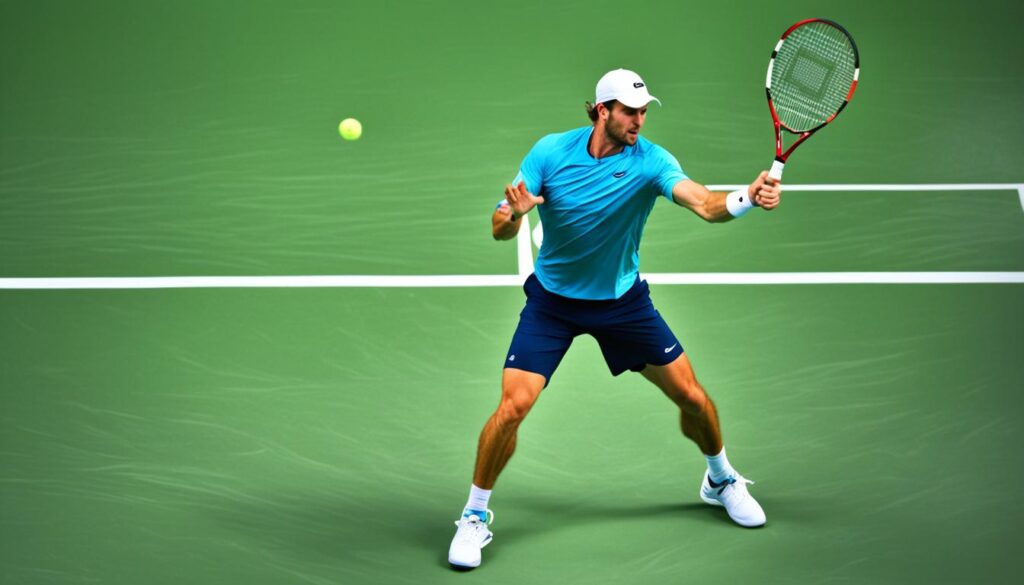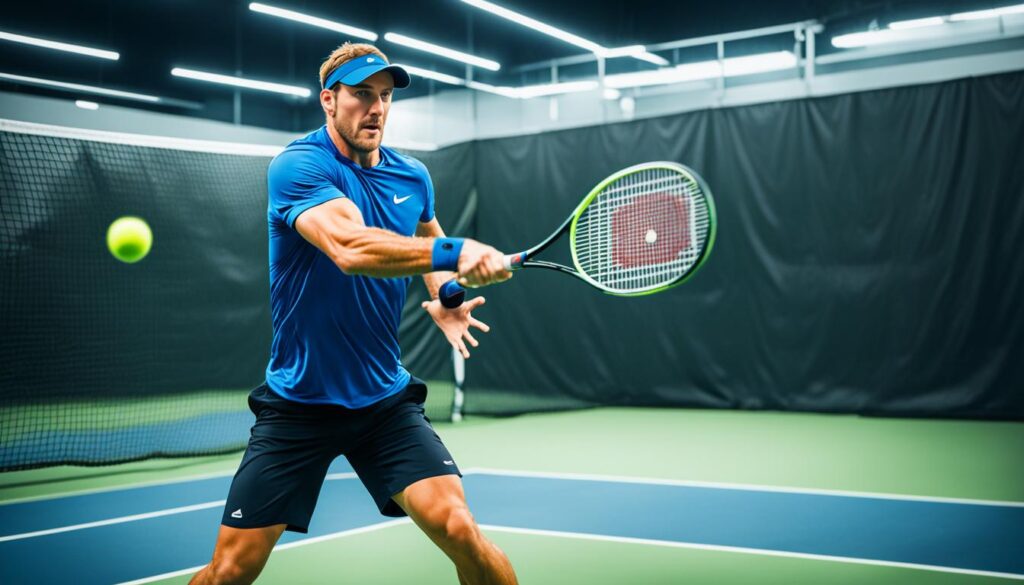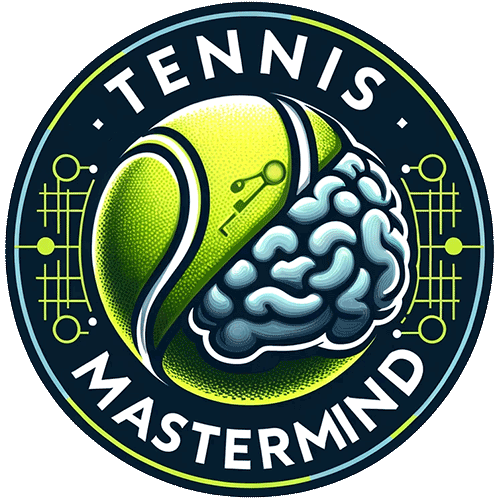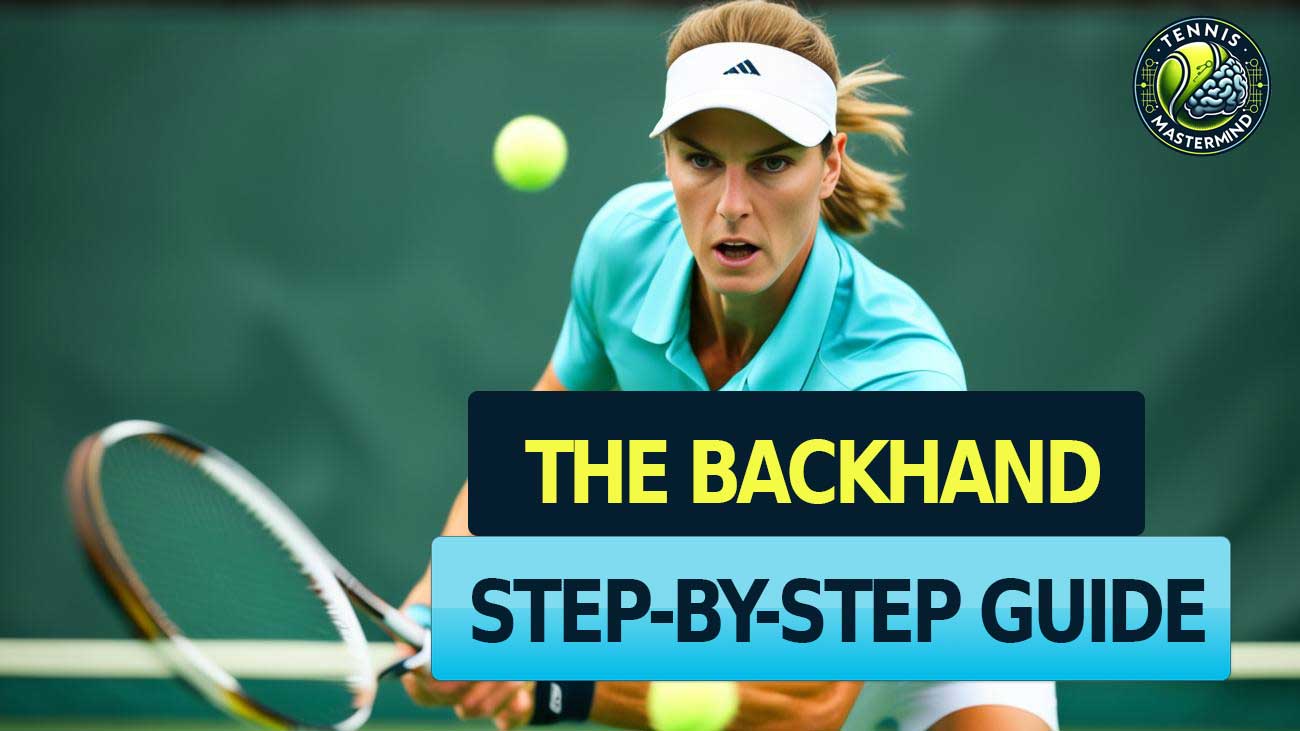The backhand stroke is a fundamental aspect of tennis that can greatly impact your game. Whether you’re a beginner looking to develop a strong backhand or an advanced player seeking to improve your technique and strategy, mastering the backhand will undoubtedly elevate your performance on the court. In this article, we will explore various tips, techniques, and drills to help you enhance your backhand stroke and take your game to the next level.
When it comes to improving your backhand technique, there are several key areas to focus on. From developing power and control to understanding the mechanics of the backhand shot, each component plays a crucial role in maximizing your backhand potential. By investing time and effort into mastering these aspects, you will see significant improvements in your overall game.
Key Takeaways:
- Developing a strong backhand stroke is essential for all tennis players.
- Improving backhand technique requires focus on power, control, and shot mechanics.
- Regular practice and specific drills can enhance backhand stroke improvement.
- Understanding and employing effective backhand strategies can give you a competitive edge.
- Continuously refine and experiment with your backhand to reach mastery.
The Basics of the Backhand: Tennis Backhand Tips For Beginners
As beginners, it’s important to focus on mastering the basics of the backhand. By understanding the key elements of a solid backhand stroke, you can build a strong foundation for future improvement. Here are some essential tips to get you started:
1. Backhand Basics
When executing a backhand shot, aim to make contact with the ball slightly off to the side. This will allow you to generate power and maintain control over the shot.
2. Racquet-Face Control
Controlling the angle of your racquet face is crucial for a consistent and accurate backhand stroke. Keep your racquet face stable throughout the swing to ensure a clean and precise contact with the ball.
3. Finding the Right Grip
Experiment with different backhand grip styles to find the one that suits you best. Common grips include the Eastern and Semi-Western grips. Choose a grip that enables you to comfortably control and manipulate the racquet during your backhand swing.
4. Level Swing
Maintain a level swing path to effectively keep the ball in play. Avoid swinging too steeply or excessively from high to low, as this can result in inconsistent shots.
5. Footwork Fundamentals
Light footwork is key to positioning yourself correctly for each backhand shot. Focus on staying light on your feet, moving with agility, and maintaining proper balance to optimize your overall performance.
By mastering these backhand basics, you’ll be well on your way to developing a strong and reliable backhand stroke. Practice regularly, remain patient, and continue to refine your technique as you progress. Remember, consistency is key when it comes to improving your backhand!
What Our Experts Say
“As a beginner, it’s important to lay a solid foundation for your backhand. Focus on maintaining a consistent racquet-face angle, finding a grip that suits your playing style, and developing light, agile footwork. By mastering these fundamentals, you’ll be able to build upon your backhand skills and take your game to the next level.” – Coach Emily Johnson
Put a New Spin on It: Tennis Backhand Tips For Intermediate Players
As intermediate players, we have already mastered the basics of the backhand shot. Now it’s time to take our game to the next level by adding spin and variety to our backhand shots.
One of the most effective ways to add spin to your backhand is by experimenting with topspin and underspin. Topsin is a forward spin that helps the ball bounce higher, while underspin is a backward spin that keeps the ball low and skidding after it hits the court.
To execute a topspin backhand, brush the ball from a lower to a higher position, creating a forward spin. This will give your shot more depth and make it more difficult for your opponent to handle.
On the other hand, for an underspin backhand, brush the ball from a higher to a lower position, imparting a backward spin. This type of shot is great for defensive situations or when you want to keep the ball low and skidding, making it challenging for your opponent to attack.
It’s important to understand different racquet-face angles and spins to give us more versatility in our backhand shot. By incorporating topspin and underspin into our repertoire, we can keep our opponents off balance and create opportunities for winners.
In the words of professional tennis player Rafael Nadal:
“Spin is not a detail. It’s everything.”
Here are some intermediate backhand tips to help you add spin to your backhand:
- Practice brushing the ball from lower to higher for topspin
- Experiment with brushing the ball from higher to lower for underspin
- Focus on racquet-face control to achieve the desired spin
- Watch videos of professional players to observe their backhand shot variations

| Spin Type | Characteristics | Advantages |
|---|---|---|
| Topspin | Forward spin, makes the ball bounce higher | Deep shots that push opponents behind the baseline |
| Underspin | Backward spin, keeps the ball low and skidding | Difficult for opponents to attack or generate power |
Adding spin to our backhand shots will not only make our strokes more dynamic but also give us greater control over the outcome of each shot. The topspin backhand can be a weapon to drive our opponents back and set up offensive opportunities, while the underspin backhand can be a solid defensive shot that keeps our opponents guessing.
So, let’s put a new spin on our backhand and take our game to new heights!
Mastering the Backhand: For Advanced Tennis Players
As an advanced tennis player, honing your backhand skills is essential to dominating on the court. By incorporating advanced backhand tips, devising a strategic game plan, identifying your favorite shot, exploiting your opponent’s weaknesses, and hitting with unwavering confidence, you can take your backhand to the next level.
Advanced Backhand Tips
Refining your backhand stroke requires advanced techniques to ensure consistency, power, and accuracy. Focus on:
- Perfecting your footwork to achieve optimal court positioning
- Utilizing proper racket preparation to generate more power
- Maintaining a relaxed grip for increased control
- Initiating a smooth and fluid swing with a compact follow-through
By mastering these aspects of your backhand, you’ll be able to execute precise shots with greater efficiency.
Developing a Winning Backhand Strategy
An effective backhand strategy involves understanding your own strengths and weaknesses, as well as those of your opponents. Identify your favorite shot, whether it’s a cross-court drive, a down-the-line winner, or a drop shot, and use it to your advantage. Additionally, closely analyze your opponent’s weaknesses and exploit them with targeted backhand shots.
By targeting your opponent’s least favorite shots and focusing on your own strengths, you can tactically gain an upper hand during matches.
Confidence and Mental Resilience
Confidence is key when executing a successful backhand. Trust in your abilities and approach each shot with self-assurance. Visualize your desired outcome before hitting the ball and maintain a positive mindset throughout the match. Embrace any mistakes as opportunities for growth and stay mentally resilient. Remember, hitting your backhand with confidence is more likely to yield positive results.
Identifying Your Favorite Shot
Discovering your favorite backhand shot is crucial for consistent performance on the court. Analyze your own game and determine which type of backhand shot you execute most effectively. Is it the topspin backhand, slice backhand, or a specific shot variation? Once you identify your go-to shot, incorporate it into your game plan and use it as a weapon against your opponents.
Having a well-rounded backhand game can make you a formidable opponent on the tennis court. By implementing advanced backhand tips, strategizing according to your strengths and opponent weaknesses, and hitting every shot with unwavering confidence, you can master the backhand and enhance your overall game.
Improving Your Backhand: Your Ultimate Guide
In this section, we will provide you with a comprehensive guide to improving your backhand technique. Whether you prefer a one-handed or two-handed backhand, understanding the fundamentals of backhand technique and footwork is essential for developing a strong and consistent shot.
One-Handed Backhand vs. Two-Handed Backhand
Before diving into the specifics of backhand technique, let’s briefly explore the advantages and differences between the one-handed and two-handed backhand.
The one-handed backhand offers a greater range of motion and versatility, allowing for more variety in shot selection. It requires excellent timing and coordination, as well as sufficient upper body strength to generate power. On the other hand, the two-handed backhand provides more stability and control, particularly for players who struggle with single-handed shots. It can be a reliable and powerful weapon when executed correctly.
Backhand Fundamentals
Regardless of which backhand technique you prefer, there are several key fundamentals to focus on:
- Racquet Face Control: Keep the racquet face perpendicular to the ground during the swing to maintain control and direction.
- Grip: Find a grip that allows you to stay relaxed while maintaining control over the shot. Experiment with different grips to find the one that works best for you.
- Swing: Maintain a smooth and level swing, focusing on making contact with the ball in front of your body. Avoid excessive wrist flicking or dipping of the racquet head.
Footwork for Backhand
Proper footwork is crucial for executing a strong backhand. Here are some footwork tips to keep in mind:
- Start with a balanced and athletic stance, with your feet shoulder-width apart.
- As your opponent starts their shot, shift your weight to the outside foot and prepare to move laterally.
- Utilize small, quick steps to adjust your position and get into an optimal hitting position.
- Focus on maintaining a stable base and staying on the balls of your feet to facilitate quick movement.
By focusing on these key backhand fundamentals and improving your footwork, you can develop a strong and reliable backhand that will become a weapon in your arsenal.
Remember, practice is key to improving your backhand technique. Incorporate these tips and techniques into your training sessions to refine your skills and elevate your game to the next level!
| Backhand Technique | One-Handed Backhand | Two-Handed Backhand |
|---|---|---|
| Advantages | Greater range of motion and shot variety | More stability and control |
| Fundamentals | – Racquet Face Control – Grip – Swing |
– Racquet Face Control – Grip – Swing |
| Footwork | Proper lateral movement and quick adjustments | Proper lateral movement and quick adjustments |
Drills and Exercises to Strengthen Your Backhand
Incorporate specific drills and exercises into your practice routine to strengthen your backhand. By focusing on targeted training, you can improve your backhand power, control, and endurance. Here are some effective drills and exercises to enhance your backhand:
1. Wall Drills
Utilize a wall to practice your backhand technique. Stand a few feet away from the wall, facing it, and hit the ball against it. This drill helps improve your consistency and allows you to work on different shot placements. Vary the speed and spin of the ball to challenge yourself and simulate game-like situations.
2. Shadow Swings
Perform shadow swings without a ball to refine your backhand stroke. Stand in front of a mirror or an open space and go through the entire motion of your backhand. Focus on proper footwork, racquet path, and body rotation. This exercise helps develop muscle memory and improves your technique.
3. Lateral Movement Drills
Enhance your footwork and agility by incorporating lateral movement drills into your training routine. Set up cones or markers on one side of the court, and practice moving quickly from side to side while maintaining your balance and executing controlled backhand shots. This drill improves your ability to reach wide balls and maintain stability during fast-paced rallies.
| Drill/Exercise | Purpose | How to Perform |
|---|---|---|
| Wall Drills | Improve consistency and shot placement | Stand facing a wall and hit the ball against it, varying speed and spin |
| Shadow Swings | Refine technique and develop muscle memory | Perform backhand swings without a ball, focusing on footwork and racquet path |
| Lateral Movement Drills | Enhance footwork and agility | Set up cones and practice moving quickly from side to side while hitting backhand shots |
Strengthening the muscles involved in the backhand shot is crucial for improving your overall game. Incorporate exercises such as resistance band pulls, medicine ball rotations, and core strengthening exercises to increase backhand power and control. Remember to warm up before performing these exercises and consult a professional trainer if necessary.
Regularly practicing these drills and exercises will help you develop a strong and reliable backhand. By focusing on improving your technique, footwork, and strength, you’ll enhance your overall performance on the court and gain a competitive edge.

Conclusion
Mastering the backhand stroke is essential for any tennis player looking to improve their game. By implementing the tips, techniques, and strategies discussed in this article, you can elevate your backhand and gain a competitive edge on the court. Practice regularly and continue to refine your technique to become a formidable force with your backhand.
Remember to focus on making contact with the ball slightly off to the side, controlling your racquet face, and finding a grip that works for you. Pay attention to your footwork and maintain a level swing that keeps the ball in play. As you progress, experiment with different spins and strategies to take your backhand to the next level.
Whether you’re a beginner, intermediate, or advanced player, there is always room for improvement in your backhand. Keep practicing, stay confident, and enjoy the process of mastering this important shot. With dedication and perseverance, your backhand will become a valuable weapon in your tennis arsenal, helping you win more points and games.




